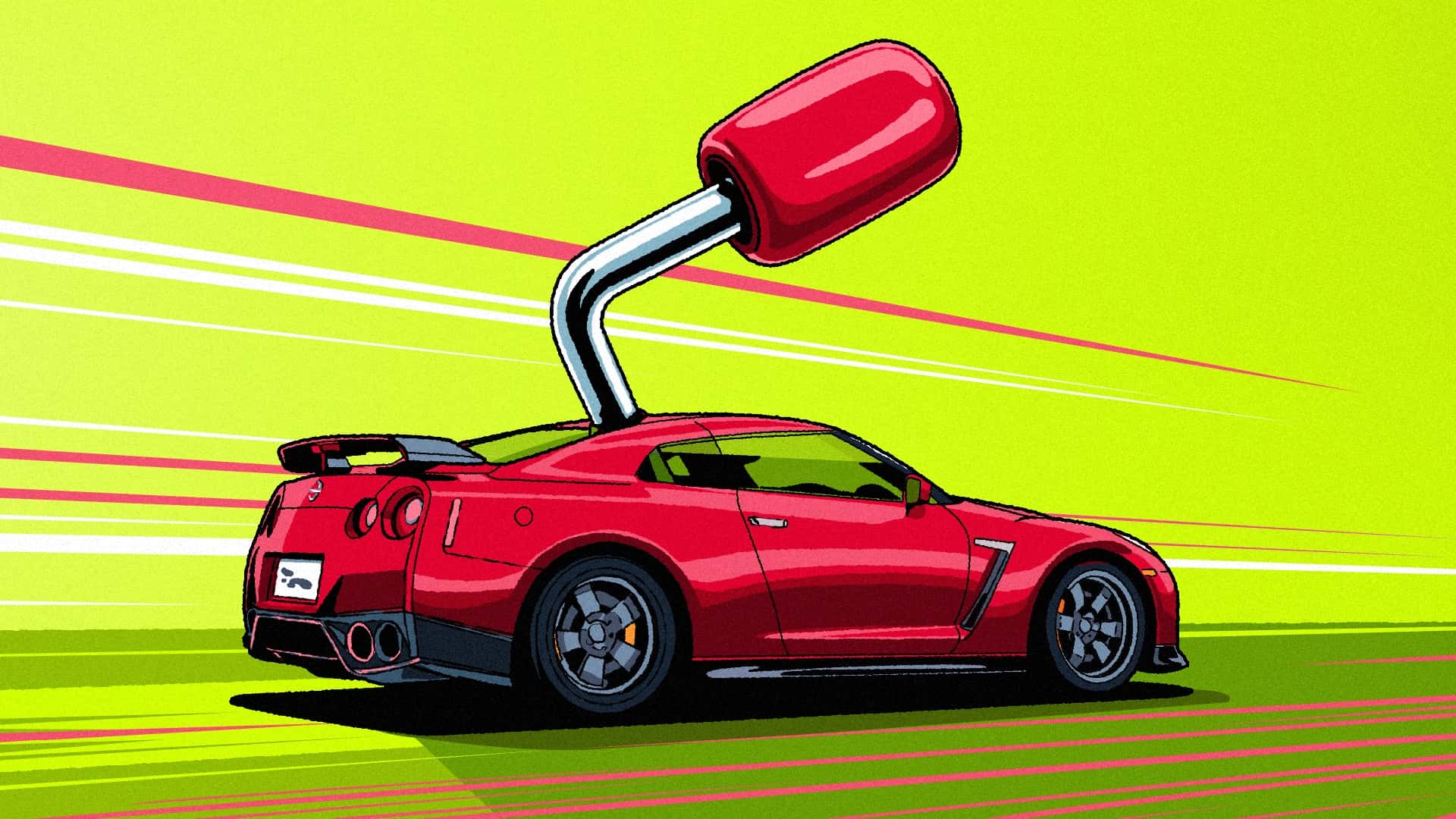
The R35 generation of Nissan's GT-R is among the most significant modern sports cars, and not just because it survived a whopping 17 years on the market. This GT-R helped introduce the world to the joys of launch control. It offered astonishingly good traction management and stability control systems before they were cool, and the R35 still looks as good today as it did back in the 2000s.
But there's one aspect of the R35 that felt a bit out of place: the transmission. At launch, the six-speed DCT made for a car that bucked and shook with every shift. Through the R35's nearly two-decade run, that transmission got better and better, to the point that, in the final version I drove last year, the transmission was… maybe not great, but not bad.

Enter Crewch with the ultimate fix: An R35 Nissan GT-R with a manual transmission. Crewch is a Nissan tuner extraordinaire, founded back in 2002 by Yoshihiko Kuruuchi. Based in the Kansai region of Japan, southeast of Kyoto, the company not only operates a full tuning shop but also has its own museum. Swing by and you can peruse 400 notable Nissans on display, including "Mr. GT-R" Hiroshi Tamura's own tuned R32 on display.
But the highlight of Crewch's work isn't their collection, it's their wild creations, like a 600-horsepower Fairlady Z drag racer that made its debut at the 2023 Tokyo Auto Salon.
Even crazier, though, is the "delusional" Crewch GT-R356C, which wears a decidedly extreme body kit. This was meant to express what a future GT-R might look like, a machine inspired by the GT-R50 and Hyper Force concepts. While the GT-R356C is perhaps less successful than either of the concepts which inspired it, I have a feeling you'll be a little more charmed by Crewch's latest creation, the manual R35.

The beauty here, though, is under the skin. Given how fundamental the R35's drivetrain is to the vehicle, this could never be just a simple swap. The R35 uses a distinct all-wheel-drive transaxle setup, with the transmission sitting at the rear axle driven by a traditional driveshaft from the VR38DETT V-6 up front.
Driving the front wheels from that sort of setup necessitated a second driveshaft, running from the transaxle at the rear back up to the front. The arrangement creates a real headache for anyone who wants to put a manual transmission in the R35 while maintaining the GT-R's trademark AWD.

Given how fundamental the R35's drivetrain is to the vehicle, this could never be just a simple swap.
Finding a solution has taken the team at Crewch 12 months. The choice of transmission was easy, at least: A Getrag 233 was selected, the same six-speed used in the R34 GTR. The family lineage is a nice bonus, but the layout is quite different. The R34's ATTESA (Advanced Total Traction Engineering System for All-Terrain... phew) mechanical AWD system sends power to the front wheels straight out of the transmission via a short driveshaft, which lies at the front of the car. It's similar in concept to the R35's electronic AWD system, except that the transmission isn't at the rear.
As you can see in the photos, the packaging is tight, but the crew at Crewch managed to squeeze it all into the central tunnel in the R35's chassis. Crewch fabricated several support braces and mounting brackets to hold the new drivetrain in place, which are highlighted yellow in the photos you see here.

The change in transmission means the final drive is different, but the Getrag 233's 3.545 ratio is close enough to the 3.7 final drive in the R35's DCT that it isn't a problem. In fact, Crewch said that the slightly taller ratio is actually beneficial for tuned R35s.
So, the good news is that you maintain AWD functionality with this system installed, albeit with the older, mechanical ATTESA system rather than the R35's electronic one.

The bad news? Sadly, all of the R35's advanced traction and stability control systems are disabled. But, for those looking for a more raw, engaged driving experience—like someone who'd typically prefer three pedals to two paddles—that might sound more like liberation.
Crewch representatives declined to quote any acceleration figures for this manual R35 but confirmed that it would be slower than a car with the DCT. That's no surprise, what with the fact that it takes a human being a little longer than 150 milliseconds to depress a clutch pedal and move a shift lever.

This, then, will not be the most high-performance R35 of all time, but it might be among the most fun to drive. And yes, you can get one if you like. Crewch is finalizing fitment and testing on the prototype vehicle you see here, developing the necessary jigs and tooling to turn this into a reproducible kit.
The hope is to finish that process over the next four to six months and then offer it for sale. Total cost? For Crewch to install a used Getrag 233 and handle all the conversion, the cost will be around 6.3 million Japanese yen or about $45,000 at today's (highly fluid) exchange rates.
Bringing your own transmission? That drops the price down to about $35,000 installed.
That, of course, requires you to get your car to Mie Prefecture. But the company does plan to sell kits internationally once they're available, assuming the tariff situation makes such a thing feasible. Keep an eye on https://crewch.com/ for details, but be forewarned: the team at Crewch do not speak English.







